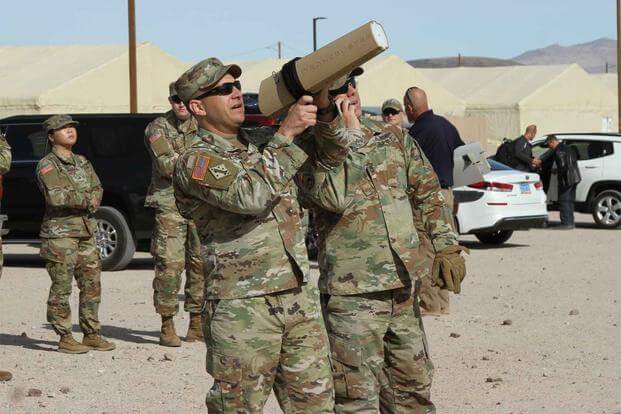By Matthew Cox

The Army-led Joint Counter Small UAS Office, or JCO, completed its strategy in early January to combat the growing threat of small UAS being deployed against U.S. forces.
Speaking to reporters Tuesday, JCO Director Maj. Gen. Sean Gainey outlined a plan to demonstrate new counter-UAS weapon systems under development by the defense industry beginning in April. The effort involves creating a joint counter-UAS training program designed to teach soldiers and other service members how to operate the systems once they are fielded.
"There is a prevalent threat out there," Gainey said. "The threat continues to use UAS as [reconnaissance] platforms and are using them more as a capacity that can inflict casualties and damage.
"We are seeing a lot of hazards where UAS are flying near installations [in the U.S.] and could be conceived as a threat because you don't really know the intent of some of these UASs and you don't want to wait until something actually happens," he added.
The Army's air and missile defense community will be responsible for employing larger weapon systems such as high-energy lasers and microwave systems to defend large formations on the battlefield. But there will not be enough air and missile defense units to protect everyone, so "ideally, we want everybody in the force to have the ability to defeat this threat because it can go down to every level and impact every level," Gainey said.
The JCO is currently working with the Army's Fires Center of Excellence at Fort Sill, Oklahoma, to create a Joint Counter UAS Center of Excellence to oversee counter-UAS training for all the services by fiscal 2024.
The effort would create a joint program of instruction; individual services would then adjust it to meet their specific requirements.
The Army, however, wants to expand the concept to ensure all soldiers get some counter-UAS training.
"I think inherently the Army is really looking hard at making counter-UAS [a military occupational specialty] agnostic platform. Anyone from a cook to a medic to an infantryman [or] tanker can operate the system, so we are trying to make the requirements and the material solutions very intuitive," said Col. Marc Pelini, division chief for Capabilities and Requirements at the JCO.
Smaller units will need smaller counter-UAS systems that will likely rely on electronic warfare, or EW, technology that jams or disrupts enemy drones, Gainey said.
"We are looking across the [gamut] of how can we get a capability all the way down to the user level, and some of that may be an EW-type system. It may be a munition within the current [brigade combat team] that they can use against this type of threat," he said. "There is no concept set in stone right now. We are creating that as we move forward."
For now, the JCO is working with the Air Force to hold its first demonstration event at Yuma Proving Ground, Arizona, for industry to test the latest weapons prototypes -- such as Low Collateral Effects Interceptors, which could consist of a wide range of kinetic technologies designed to defeat enemy drones while causing minimal collateral damage to civilian areas or sensitive installations, according to Army officials.
If all goes well, the JCO could select an interceptor capability by early fiscal 2022 for fielding, Gainey said.
The JCO has also begun testing "high-energy laser" technology for counter-UAS, he added.
"We have high-energy lasers that have proven successful ... and we are building off of that capability to where you will see high-energy lasers integrated into our architecture," Gainey said, adding that some systems are entering into an operational test environment.
The JCO is also working with the Air Force to develop high-powered microwave counter UAS systems, Gainey said.
"As we continue to assess these capabilities and move forward, they could potentially be enduring systems as technology continues to improve," he said.
No comments:
Post a Comment